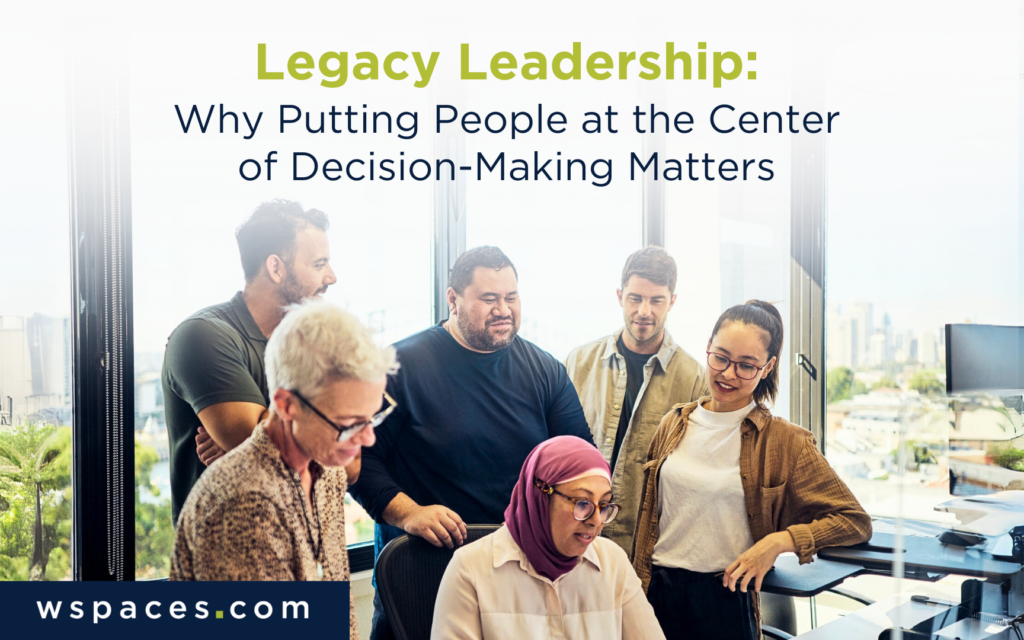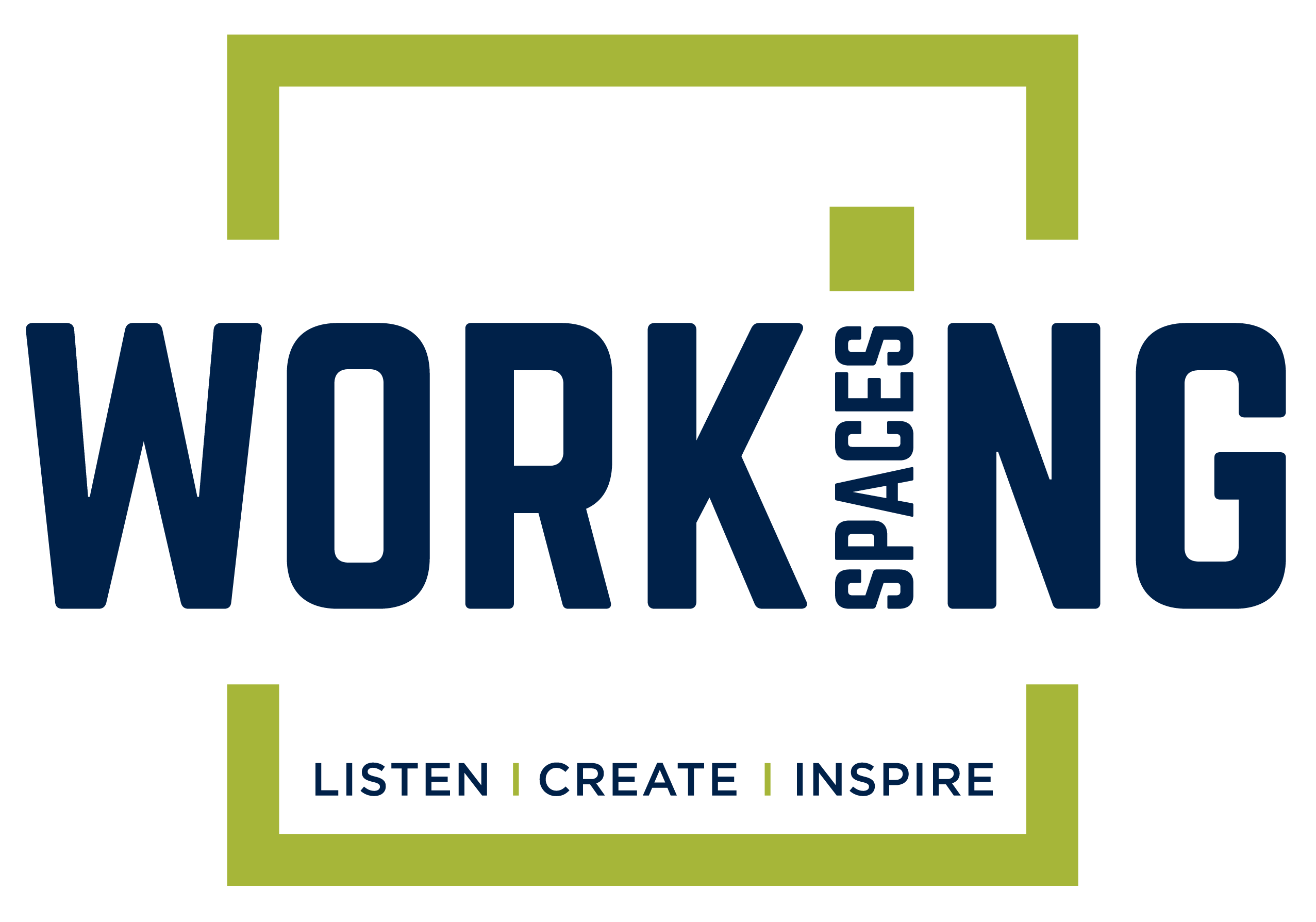
From open-space designs to hybrid work environments, there’s no shortage of workplace trends. As workspaces continue to evolve, so do leadership styles. At the center of this transformation is legacy leadership principles: a concept that focuses on people-centered leadership strategies and human connection.
In a recent episode of our Culture at Work podcast, COO Tim Carroll sat down with Paul Holland, Managing Principal at Solomon Coyle, to explore the unique impact of leadership in decision-making. In this blog, we’ll break down some of his key insights, including navigating workplace trends, crafting client-centered strategies and the steps leaders can take to build a lasting legacy.
The Importance of Office Culture
Any office employee can tell you that every workspace has its own culture. Ideally, your office culture is an intentionally curated, personalized environment that reflects your brand’s unique values and purpose. Some companies may have a creative, free-spirited culture, while others maintain a more practical, organized environment. While work cultures vary, they all share one thing in common: at the heart of every culture is people.
As Holland emphasized in our podcast episode, companies aren’t just offering products and services—they’re shaping the way people live. That’s why it’s incredibly important to have the right people representing your company. By crafting a specific culture, you can attract like-minded individuals who resonate with your company’s values.
When an organization clearly defines its mission, it naturally draws people who share similar beliefs. In addition to promoting team cohesion, this strengthens client relationships and helps pave the way to success.
The Future of Office Design: What to Expect in 2025
The continuous transformation of workspaces has led people to wonder: What should we expect moving forward? In the past, workspaces were often influenced by the economy. During the 2007-2009 recession, employers wanted high-density workspaces that maximized real estate. Around 2015, people started gravitating toward “open flex” atmospheres that reflected the feeling of being at home.
Things changed again during the pandemic, which brought a shift to remote and hybrid work. Now, as more and more offices reopen fully, we’re seeing a variety of trends:
- Increased Focus on People-Centered Workspaces: Traditionally, designs have impacted the way we work. Now, we’re seeing people influence designs. Offices are turning toward their employees and asking what they want in a workplace. As Holland puts it, the pandemic has “wiped the whiteboard clean,” giving us permission to “break some rules.”
- Combination of Different Designs: Every person has their own unique preferences and working style. To accommodate these differences, many companies are opting for multiple design types. For example, we’re seeing an influx of “open flex” workspaces that also contain private areas and cubicles. Not only does this support multiple needs, but it also pays homage to generational differences, building environments that people of all ages feel comfortable in.
- Increased Flexibility: There’s no question that there are many benefits to in-person work. Not only does it encourage collaboration, but it promotes social bonds. However, many employees want the flexibility that comes with remote or hybrid schedules. Holland believes that the answer lies in giving employees more freedom (such as the ability to set their own working hours and choose their own seating within the office). Returning to the office doesn’t have to mean sacrificing autonomy.
Above all, 2025 is about giving more power to the people that make up companies. Employees want to work for companies that value them. By fostering environments that make employees feel supported, companies can boost productivity, profits and retention rates.
Transforming Your Workspace: Legacy Leadership Principles
Now that you know the benefits of people-centered workspaces, the next step is curating this type of environment. Doing this starts by implementing the right office design. Here are some top benefits of intentional, human-focused workspace designs:
- Attracting the Right People: As mentioned earlier, incorporating your brand values into your office helps attract employees who align with your needs. Having the right people in place goes a long way toward supporting your business—after all, quality is better than quantity.
- Boosting Employee Retention: Whether it’s by accommodating generational preferences or increasing flexibility, there are many ways to make your employees happy via design. The happier your team is, the better the final product will be.
- Improving Client Relations: People-centered leadership strategies don’t just benefit employees; they also benefit clients. As Holland explains, clients can detect the energy of the teams they work with. If you have a harmonious working environment, clients are immediately drawn to that.
Ultimately, the workspace is more than just a physical location. With the right furniture, you can elevate your working environment and build a place that evokes creativity, increases productivity and inspires both employees and clients alike.
Choosing the Right Furniture for a High-Performing Office in 2025
Ready to transform your workspace with purposeful furniture? Building an office that inspires innovation requires the right partner. At Working Spaces, we have over 25 years of experience in the commercial office furniture industry. Over the years, we’ve grown from a regional provider to a nationwide furniture dealer.
While we have the resources of a nationwide company, we maintain the personalization and customer service of a small business. We’re dedicated to our clients, and we go the extra mile to meet your needs. Contact us today to learn more!
